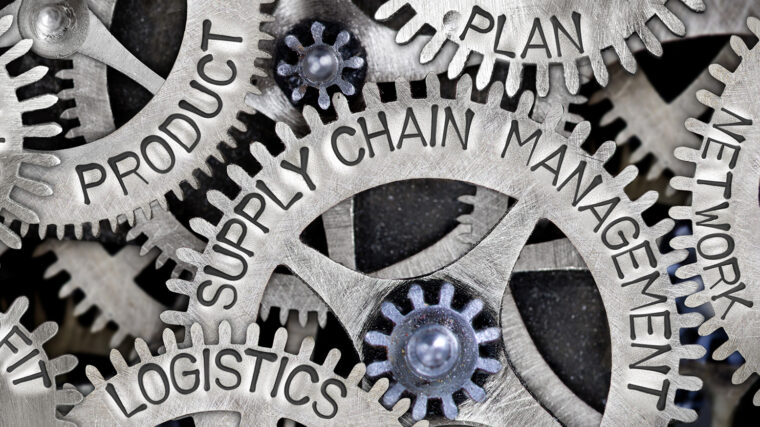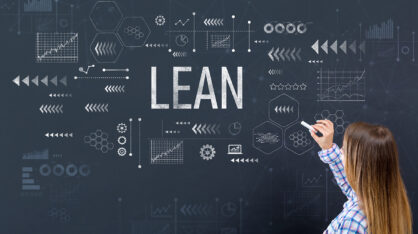Introduction
The new geopolitical situation has created the need to create new strategies and policies to meet the energy transition goals in the EU. For example, the REPowerEU plan has set a goal of installing 320 gigawatts (GW) of new solar photovoltaics (PVs) by 2025 and 600 GW by 2030, which requires increasing the current solar PV installation rate by three times. A critical component of the road map in the energy transition journey is the supply chain required to support the climate change and energy transition goals. Supply chain management, as defined by the Association for Operations Management, is the design, planning, execution, control, and monitoring of supply chain activities with the objective of creating net value, building a competitive infrastructure, leveraging worldwide logistics, synchronizing supply with demand, and measuring performance globally. The renewable energy supply chain is becoming an important issue in the green economy as the role of fossil fuels in energy mix has been declining because of greenhouse gas (GHG) emissions and declining prices (Cucchiella and D’Adamo, 2013). The goal of this article is to present a brief overview of global supply chain in renewable energy technologies, the risks, and recommendations.
The global supply chain of renewable energy environment is becoming a complex network and filled with uncertainties and can lead to potential supply chain disruptions. The COVID-19 and the Russian war with Ukraine has also created the need for creating resilient supply chain (RSC) linkages to achieve the goals of climate change. In renewable energy projects, the security of supply of finished products, key components, such as semiconductors or raw materials critical to renewable energy has become a concern in the context of ongoing supply chain disruptions, trade disputes and geopolitical rivalries (Bampinioti et al. 2022). The risks in renewable energy supply chain are growing mainly due to geographical sourcing dependency. For example, the majority of solar PV manufacturing in 2021 was produced in China, with 96% of global production. In contrast, major solar installers such as Germany, Brazil, India and the United States are net importers. The European Union imported 84% of the modules it installed between 2017 and 2021, more than the United States (77%) or India (75%), (IEA, 2022). Similarly, in wind energy, China installed more than 80% of new offshore capacity (Clark et al., 2022). Only three Chinese companies accounted for 57.5% of global wind installations (Barla and Lico, 2022).
From a supply chain perspective, this can present an enormous risk and uncertainties if very few countries dominate the supply chain in the renewable energy projects. To meet the climate change goals, a resilient supply chain model should be developed in the EU. A resilient supply chain consists of coordination among resources, flows and stocks with a well-defined sustainability concept and this requires more attention by all actors involved in the renewable energy value chain. RSC has been defined as ‘the capacity for an enterprise to survive, adapt, and grow in the face of turbulent change’ (Fiksel, 2006), and suggested four major characteristics of resilient systems are: diversity, efficiency, adaptability, and cohesion.
Value Chain in Resilient Supply Chain
The main components of the value chain in RSC include location of raw materials, logistics, manufacturing of equipment, construction and installation, operation and maintenance, support services, and enabling functions and governance aspects (see Figure 1)

Supply Chain Risk in Energy Transition Related Technologies
One of the key risks for energy transition–related technologies is the access to raw materials, such as silicon, copper cobalt, lithium and rare earths, and processed materials including steel and aluminium, and the ability to manufacture or reliably procure manufactured components, such as semiconductors, solar PV cells and inverters, and wind turbine blades and towers (IRENA, 2022). This has increased attention in upstream (especially access to raw materials) and downstream (the handling of components/materials after equipment reaches the end of its useful life) within the supply chain (IRENA, 2022). The key events and trends that could increase risk related to the supply chain in renewable energy are presented in Table 1, and Table 2 presents technology specific risks.
| Risks in renewable energy supply chain | Comment |
|---|---|
| Volume shortage | Supply chain cannot deliver the quantity of material or components required at required amount, either due to lead times required to scale up or physical limits (e.g., constraints in mining capacities). |
| Price volatility | Material or component is subjected to market and economics forces that lead to consistently rising or volatile prices. |
| Geographical sourcing dependency | Material or component production is significantly located in a region where geopolitical rivalries, social, regulatory, or other factors could affect trade flows. |
| Long lead times | Material or component takes a long time to be procured. |
| Quality | Material or component may suffer from low quality due to massive increase of demand and decrease of quality controls to speed up the process. |
| Lack of qualifed skills | New skills are required in energy transition technologies, such as battery technology and management, carbon financing, digitalisation and project design and planning skills. |
| Governance aspects | Institutions and government lagging project development, for example, long delays in permitting process. |
| Reputational risks | Vulnerabilities in the supply chain can lead to reputational damage and economic loss and failing to adhere to environmental standards throughout the supply chain. |
| Selected technologies in energy transition | Specific risks |
|---|---|
| Wind technology | For example, EU provides only 1% of raw materials for wind turbines and expected supply shortage for neodymium and praseodymium can slow down the drive to increase wind power projects. |
| Solar PV technology | More than 70% of solar cell and module components is coming from China, and disruptions in supply chain impact the increase in the development of solar projects. |
| Batteries | 60% lithium from Latin America; more 50% of world cobalt is from the Democratic Republic of Congo, and 13% from Finland. Changes in geopolitical situation can impact the supply chain and affect the role of battery technology in energy transition. |
| Wind turbines, solar, batteries, and grids | Increase in demand for construction workers will increase more than threefold by 2030, and currently there are lack of blue-collar workers in the renewable energy industry. |
| Heat pumps | Steel and copper are key raw materials for the creation of heat are subject to supply chain vulnerabilities. Inverters and electrical components may face semiconductor bottleneck. |
Conclusions
The key risks in developing RSC are political stability, geographical-dependency sourcing, and geopolitical rivalries. In addition, there is a growing awareness among civil society groups for improvement in corporate, environmental and social governance. For example, mining and processing of mineral, such as nickel for batteries can have an effect on the environment. Researchers (e.g., Morse, 2021; Stone, 2022) have expressed worries aboutbiodiversity, waste disposal, water pollution and declining labour standards in areas where mining activities are taking place. In addition, increasing awareness, such as child labour under harsh work conditions in cobalt mining, could put pressure on the supply chain.
From the Finnish and the EU perspective, depending on non-EU countries for the sourcing of key components could therefore become a major risk, particularly for solar PV, batteries, and power electronics. Consequently, stakeholders should critically evaluate these and develop action plans to mitigate these risks. The mitigation plans should include regional supply chain hubs in Finland and the EU and diversify supply chains for components across many suppliers in different geographical regions. More research and innovation are also required to create substitutes for critical materials in RSC. Research activities in areas such as bioenergy and hydrogen should be increased to create new areas of energy sources. In addition, effective policies should be developed in the EU to attract and retain competent and skill workers from and outside the EU. Universities and educational institutions should develop new curriculum to match the realities of developing RSC skills. For example, courses on energy laws, electricity trading, and energy sustainability should be incorporated in all programs so that the students can be prepared for the future challenges in energy business and supply chain values. This enables critical discussion about the policy making and climate change goals. Critical discussions should focus on the whole supply chain and not on parts of the supply chain. The strategies of climate change and energy transition should be developed, taking into consideration the supply chain capabilities, and failure to do so could create stress and resistance in our energy transition journey. The disruption of the supply chain in renewable energy can have adverse effects in both revenues and costs, so future business plan and models should be developed based on holistic and strategic thinking in a growing multi polar global environment.




